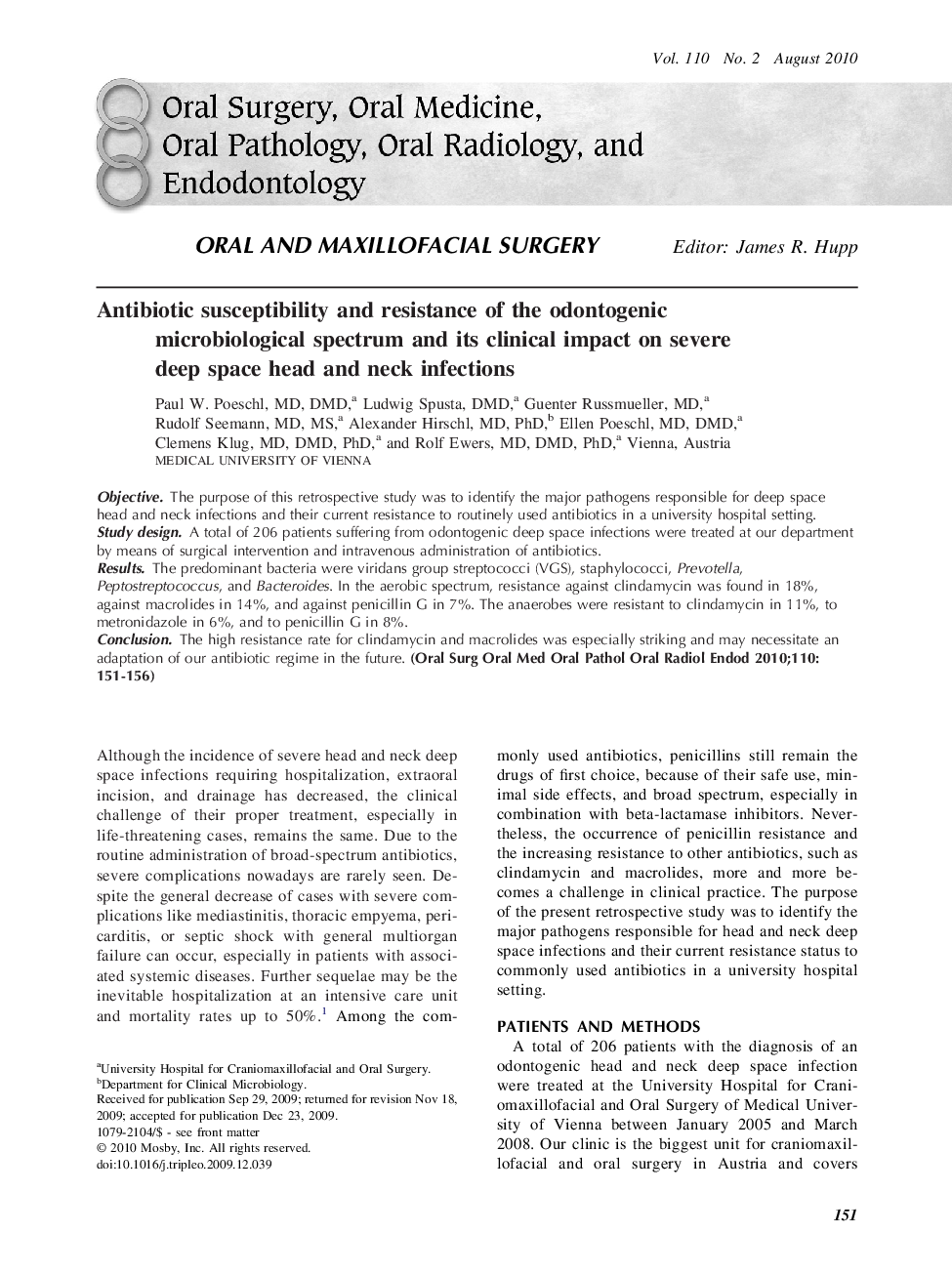| Article ID | Journal | Published Year | Pages | File Type |
|---|---|---|---|---|
| 3167489 | Oral Surgery, Oral Medicine, Oral Pathology, Oral Radiology, and Endodontology | 2010 | 6 Pages |
ObjectiveThe purpose of this retrospective study was to identify the major pathogens responsible for deep space head and neck infections and their current resistance to routinely used antibiotics in a university hospital setting.Study designA total of 206 patients suffering from odontogenic deep space infections were treated at our department by means of surgical intervention and intravenous administration of antibiotics.ResultsThe predominant bacteria were viridans group streptococci (VGS), staphylococci, Prevotella, Peptostreptococcus, and Bacteroides. In the aerobic spectrum, resistance against clindamycin was found in 18%, against macrolides in 14%, and against penicillin G in 7%. The anaerobes were resistant to clindamycin in 11%, to metronidazole in 6%, and to penicillin G in 8%.ConclusionThe high resistance rate for clindamycin and macrolides was especially striking and may necessitate an adaptation of our antibiotic regime in the future.
